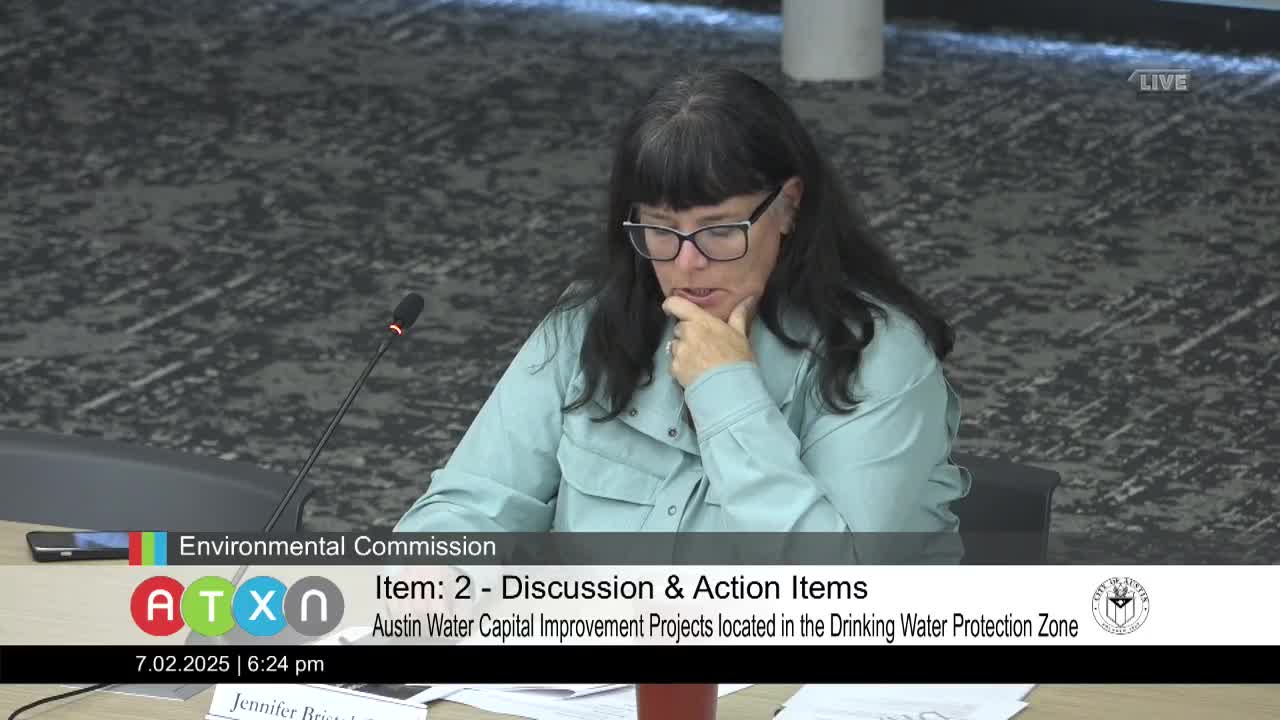City discusses $11M water service funding for Lost Creek post-ETJ disannexation
July 02, 2025 | Austin, Travis County, Texas
This article was created by AI summarizing key points discussed. AI makes mistakes, so for full details and context, please refer to the video of the full meeting. Please report any errors so we can fix them. Report an error »

In a recent meeting of the Austin Environmental Commission, significant discussions emerged regarding the financial implications of servicing the Lost Creek area, which has recently disannexed from the city’s extraterritorial jurisdiction (ETJ). The commission addressed concerns about the allocation of $11 million for water and wastewater utility services in a community that is no longer part of the ETJ, raising questions about taxpayer responsibility and the rationale behind continued service.
Commission members expressed apprehension about the expenditure, particularly given that Lost Creek residents are still within the Austin Water service area and continue to pay for utility services through established rates. This financial structure allows the city to maintain service obligations despite the community's disannexation. The project in question includes the construction of an elevated storage tank, which is expected to enhance the overall resiliency of the water system in the region, benefiting not only Lost Creek but also the broader pressure zone.
Additionally, the meeting touched on the complexities of service boundaries, with discussions about areas marked as outside impact fee jurisdiction. These areas, described as "donut holes," may involve wholesale customers or other jurisdictions, complicating the city's service landscape.
The commission also highlighted the importance of including leak detection solutions in future reports, emphasizing the environmental impact of water management practices. This request aligns with ongoing efforts to enhance the city’s infrastructure and address potential environmental concerns.
Overall, the meeting underscored the challenges faced by the Austin Environmental Commission in balancing community needs, financial responsibilities, and environmental stewardship. As the city navigates these complexities, further discussions and reports will be crucial in shaping future utility management strategies.
Commission members expressed apprehension about the expenditure, particularly given that Lost Creek residents are still within the Austin Water service area and continue to pay for utility services through established rates. This financial structure allows the city to maintain service obligations despite the community's disannexation. The project in question includes the construction of an elevated storage tank, which is expected to enhance the overall resiliency of the water system in the region, benefiting not only Lost Creek but also the broader pressure zone.
Additionally, the meeting touched on the complexities of service boundaries, with discussions about areas marked as outside impact fee jurisdiction. These areas, described as "donut holes," may involve wholesale customers or other jurisdictions, complicating the city's service landscape.
The commission also highlighted the importance of including leak detection solutions in future reports, emphasizing the environmental impact of water management practices. This request aligns with ongoing efforts to enhance the city’s infrastructure and address potential environmental concerns.
Overall, the meeting underscored the challenges faced by the Austin Environmental Commission in balancing community needs, financial responsibilities, and environmental stewardship. As the city navigates these complexities, further discussions and reports will be crucial in shaping future utility management strategies.
View full meeting
This article is based on a recent meeting—watch the full video and explore the complete transcript for deeper insights into the discussion.
View full meeting
